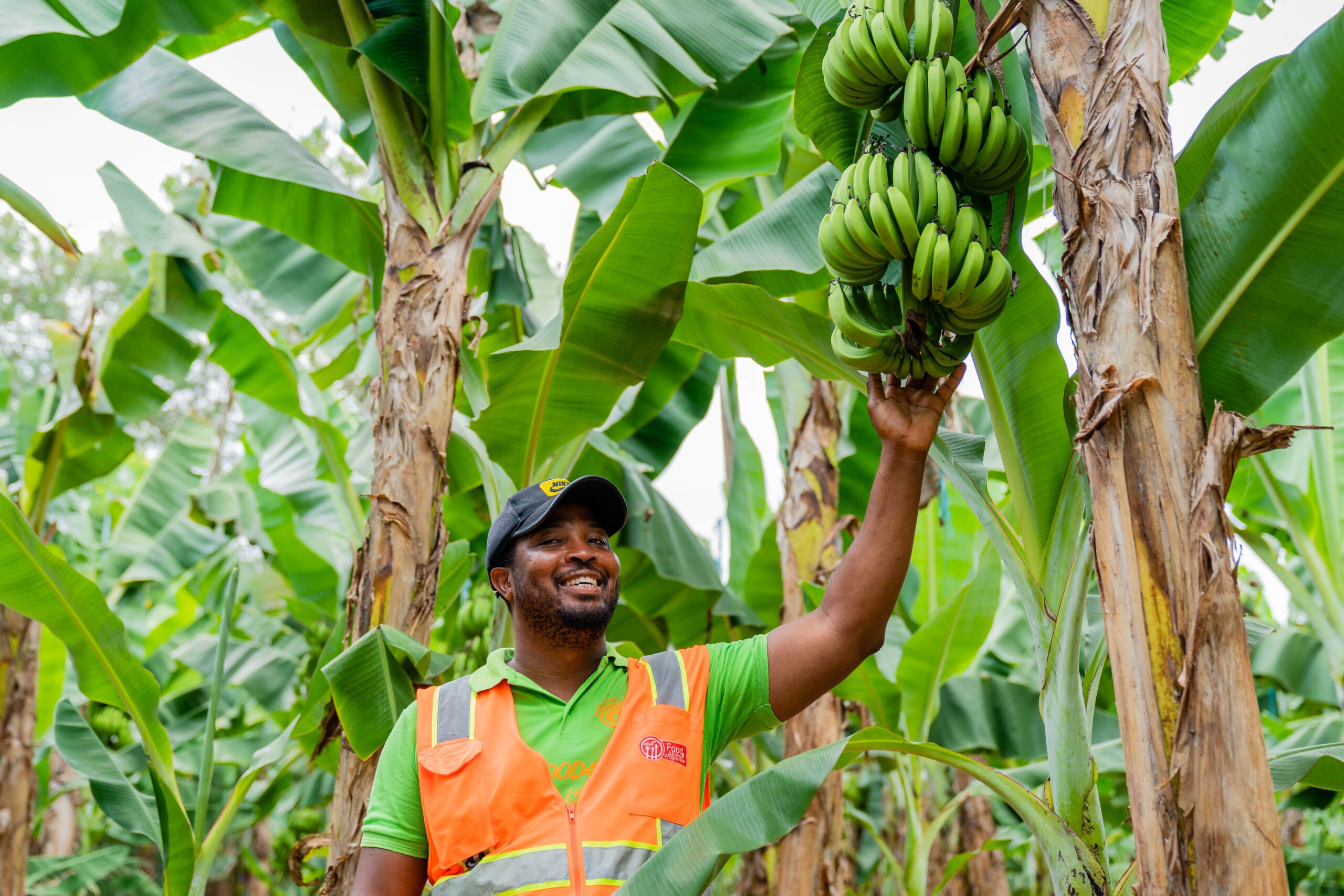Food Banking Kenya’s Produce Depot Helps Small-Scale Farmers Get Value For Their Surplus While Getting Food to Those Who Need It
Written by Chris Costanzo
Just off a main road well north of Nairobi, in the foothills of the Aberdare Mountains, two cinder-block buildings eye each other across a broad dirt lane. Flags atop spindly tree-trunked poles indicate that this is a site of government activity – the local police station and a county administrative office are located here.
As a village elder in Kamae, the hamlet just down the slope, Robert Chege has been a familiar presence at this site for years, representing the interests of his fellow farmers and villagers in government decision-making. Energetic and charming, Chege – nicknamed Tronic for the small electronics shop he also runs – is a man whom everyone in town knows and trusts.
Not long ago, Chege embraced a new voluntary role in the community: he helps hundreds of small-scale farmers throughout the surrounding area to offload surplus produce they can’t eat or sell, while gaining access to foods they otherwise wouldn’t be able to obtain.
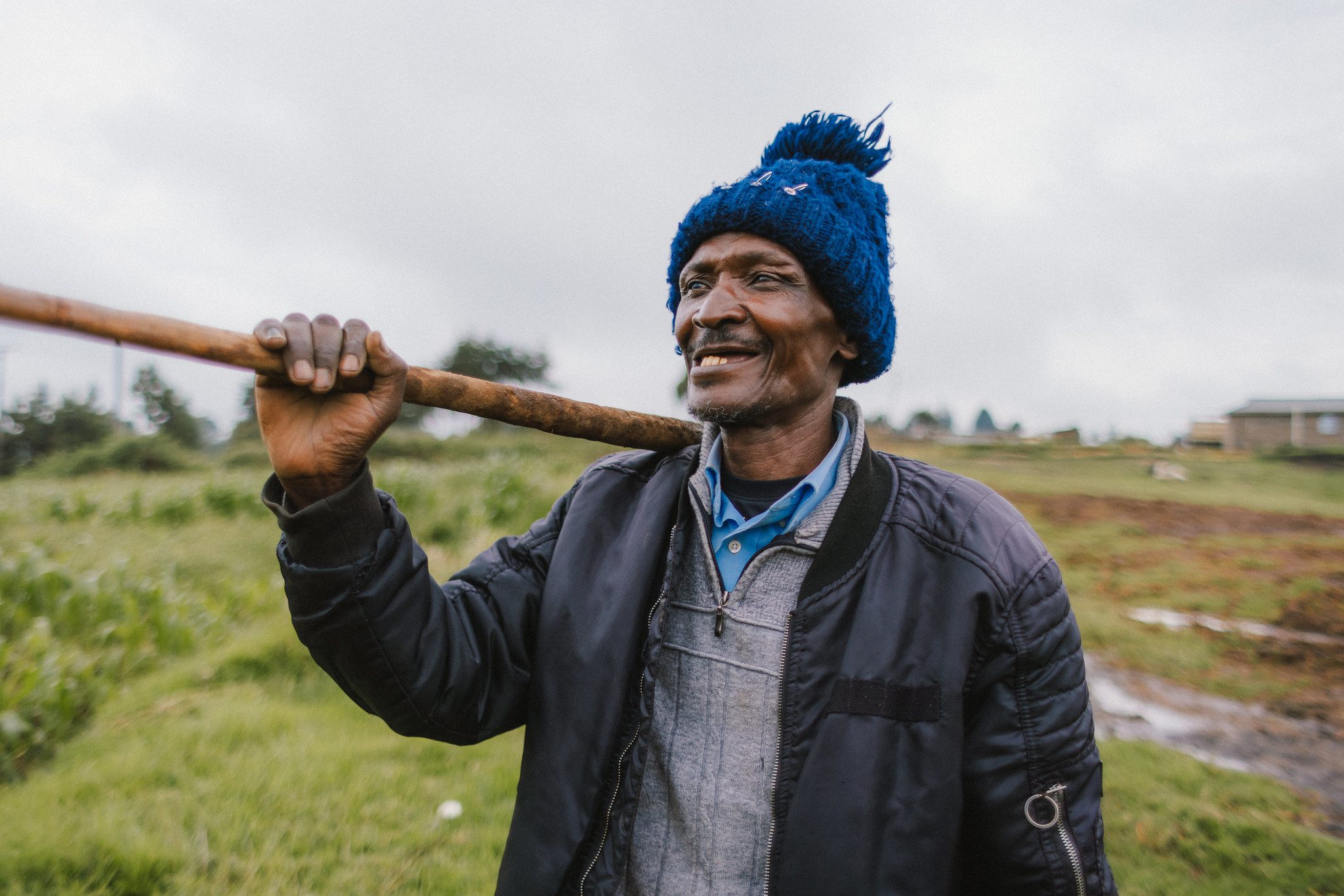
Food Banking Kenya brokers this exchange, working through a facility it built that sits alongside the government buildings and is known locally as the produce depot. The depot addresses a cruel irony of food insecurity: while there is enough food to feed everyone, it’s not always available in places where the people who need it can get it. In Kenya, for example, 40 percent of the food produced – worth $655 million – is wasted each year, as about 37 percent of the population goes food insecure.
In a place like Kamae where most everyone has a small plot of land to cultivate, certain types of food are almost always in abundance, like the cabbage, kale and potatoes that grow well in the area’s cool climate. At the depot, Chege takes in donations of this surplus food, recording them in a small notebook, as villagers arrive with bundles of food carried on their backs, bikes, motorcycles, wheelbarrows, and donkeys. On a recent day in January, he documented six donations, including one of 140 pounds (64 kilograms) of cabbage and another of 33 pounds (15 kilograms) of potatoes. Day after day, the donations add up.
A couple of times a week, Food Banking Kenya sends a vehicle up to this mountainous region to collect all the food that Chege has gathered and bring it back to Nairobi where food insecurity is acute and the fresh produce can go to good use. At the same time, the food bank drops off items that Chege’s fellow farmers could use, like rice, cooking oil and flour, or vegetables that are not easily grown in the region, such as squash or maize.
The scene at the produce depot is a microcosm of a scenario that plays out along the farming supply chain all over Africa and the world. Globally, between 33 percent and 40 percent of all food is wasted as it moves from farm to fork. Of that, about 15 percent is lost on farms during and after harvests. “Food is in plenty here,” Chege said, describing the fertile region where he lives. The produce depot “is a place where we can take the food so that it can help people instead of going bad.”
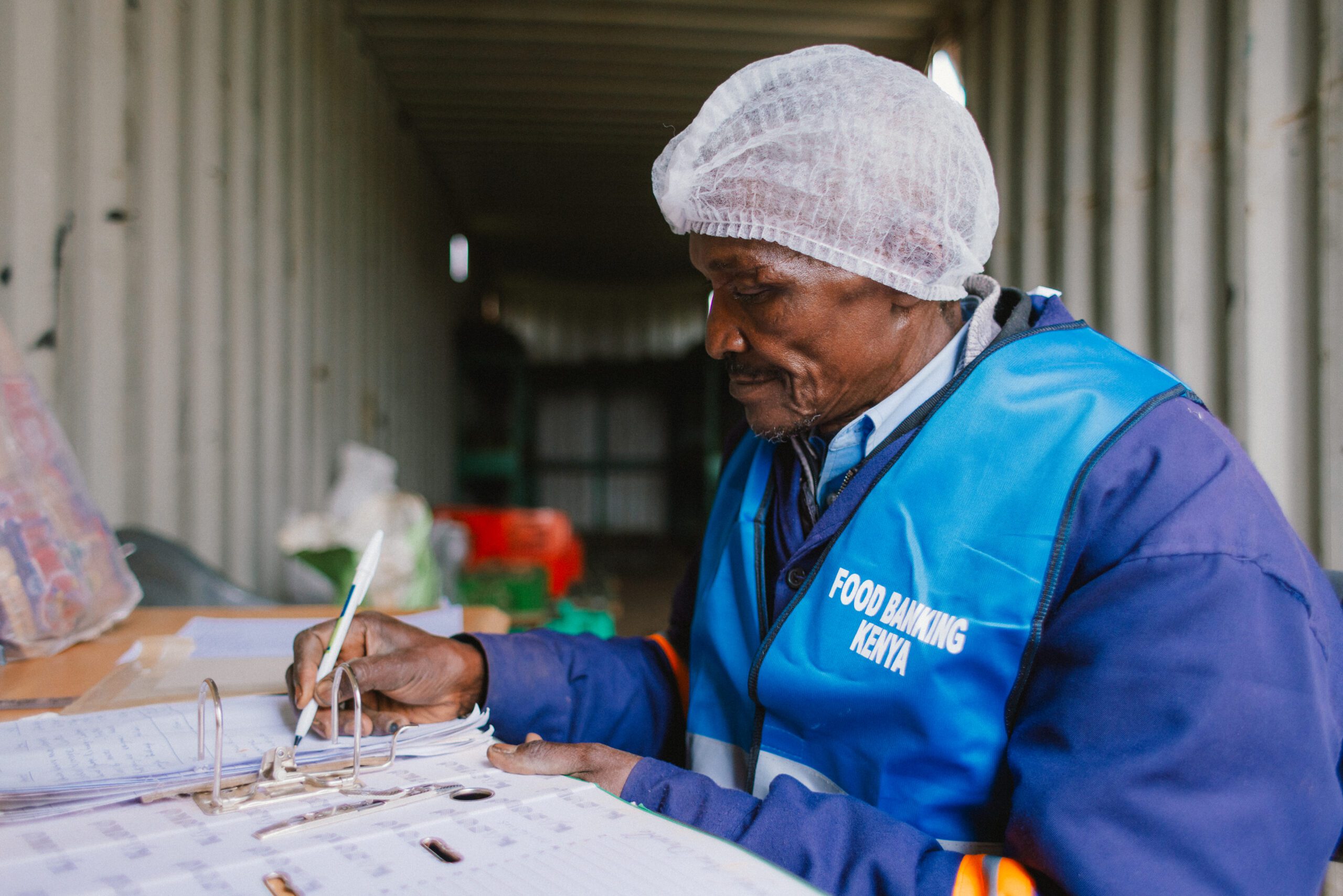
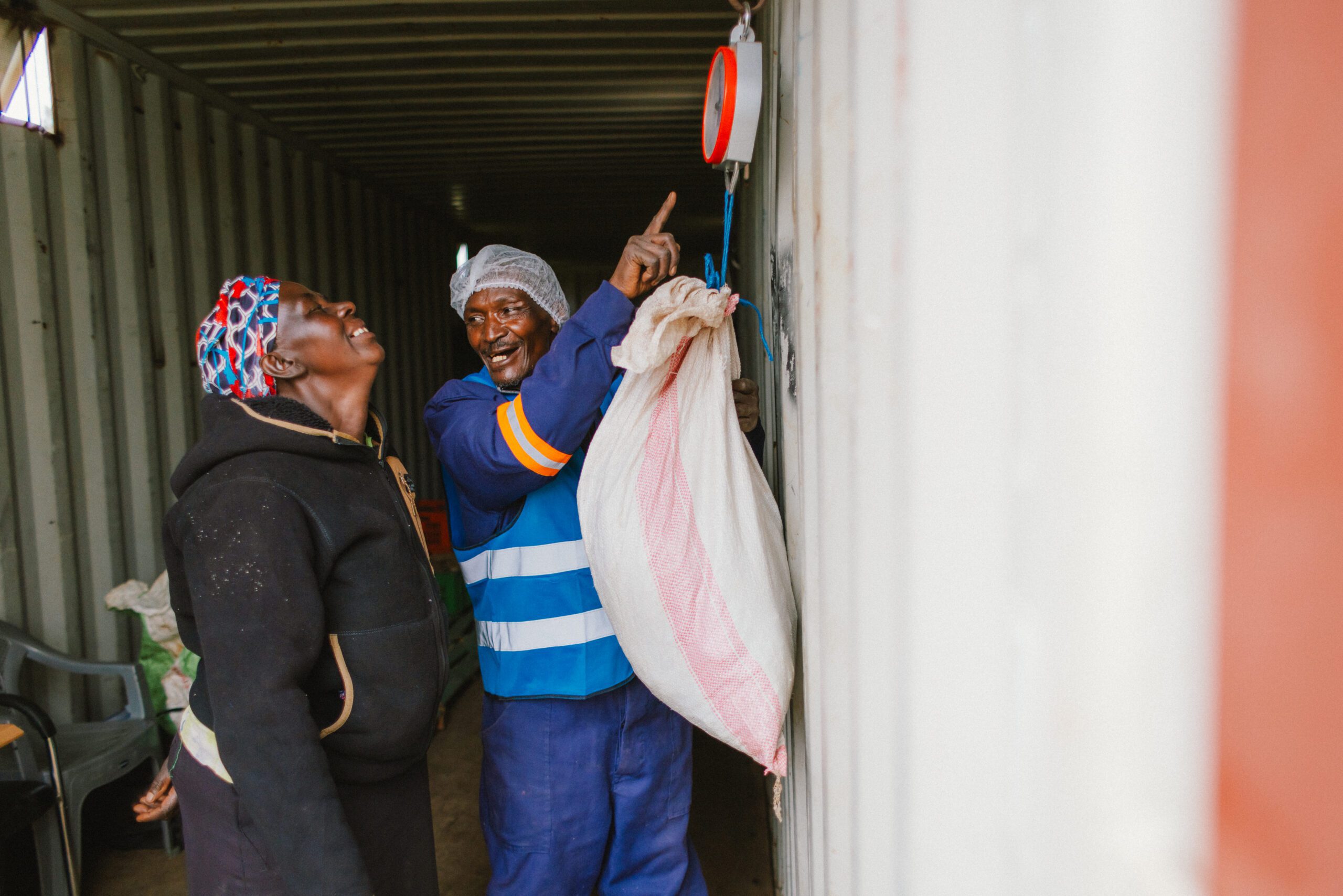
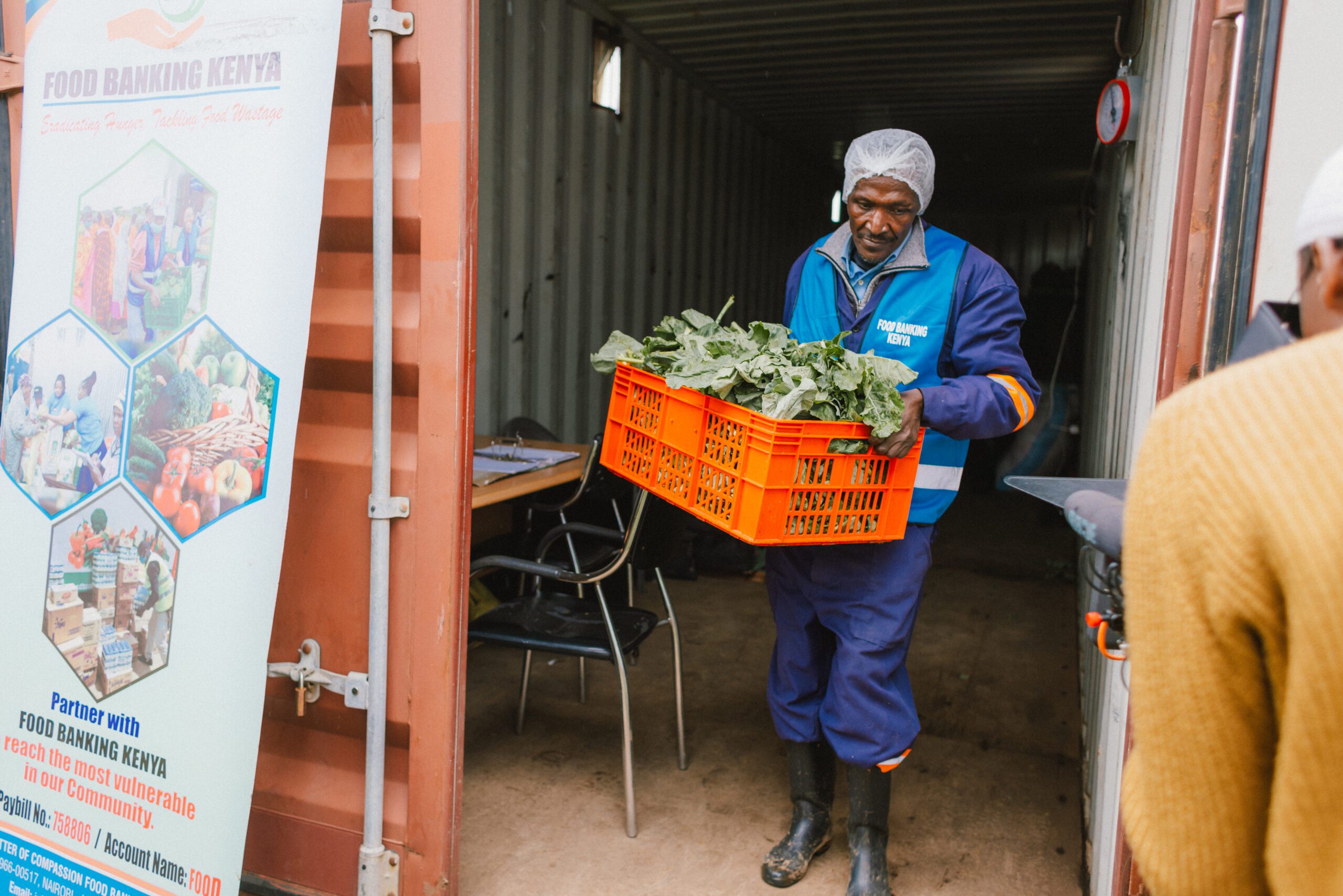
The produce depot in Kamae, shaped like a small shipping container, has become a blueprint for three others Food Banking Kenya has since built, and it wants to build more. A grant from The Rockefeller Foundation to The Global FoodBanking Network to support 13 food banks in ten countries across Africa, Asia and Latin America will help Food Banking Kenya construct its next depot.
Through the grant funding, which overall aims to address food insecurity and reduce food waste, Food Banking Kenya is also expanding its ability to store and transport produce. It has purchased a refrigerated van, added refrigeration to an existing van, and added a chest freezer to its warehouse to store protein recovered from retailers. It has also built a solar dehydrator near the Kamae depot to dry out fresh produce, making it easier to store and transport while still retaining its nutrient density. So far, the funding has helped the food bank increase its agricultural recovery by 79 percent.
Such capacity-building is necessary, especially because the food bank also has relationships with large-scale growers and food packers who provide it with donations of surplus produce, up to six tons at a time. All in all, agricultural recovery makes up more than 90 percent of the food bank’s sourcing, an approach that helps reduce food waste and its contribution to greenhouse gas emissions, while also providing nutritious food to people who need it. Eighty percent of the food bank’s distributions go to children, with the remaining going to the elderly.
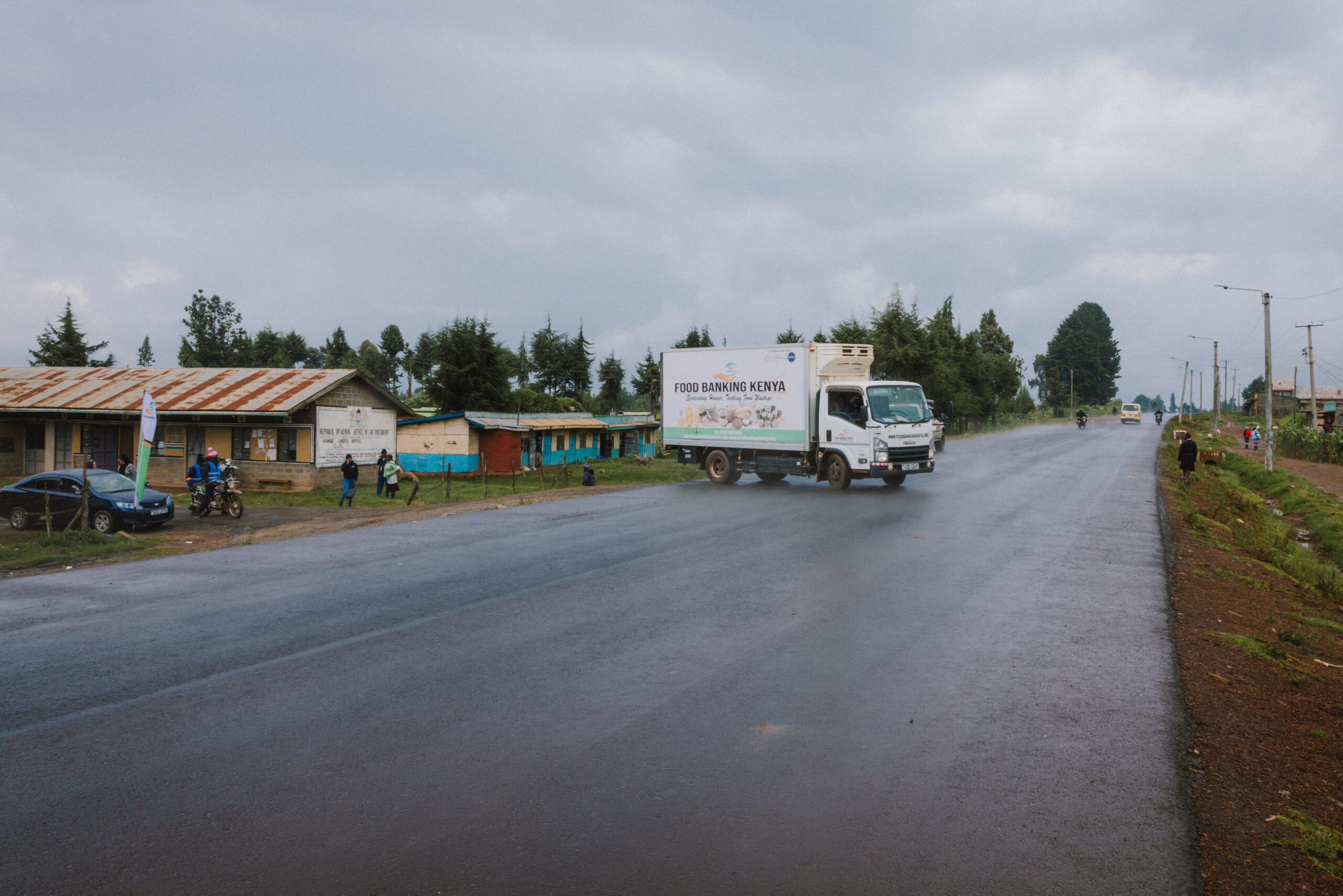
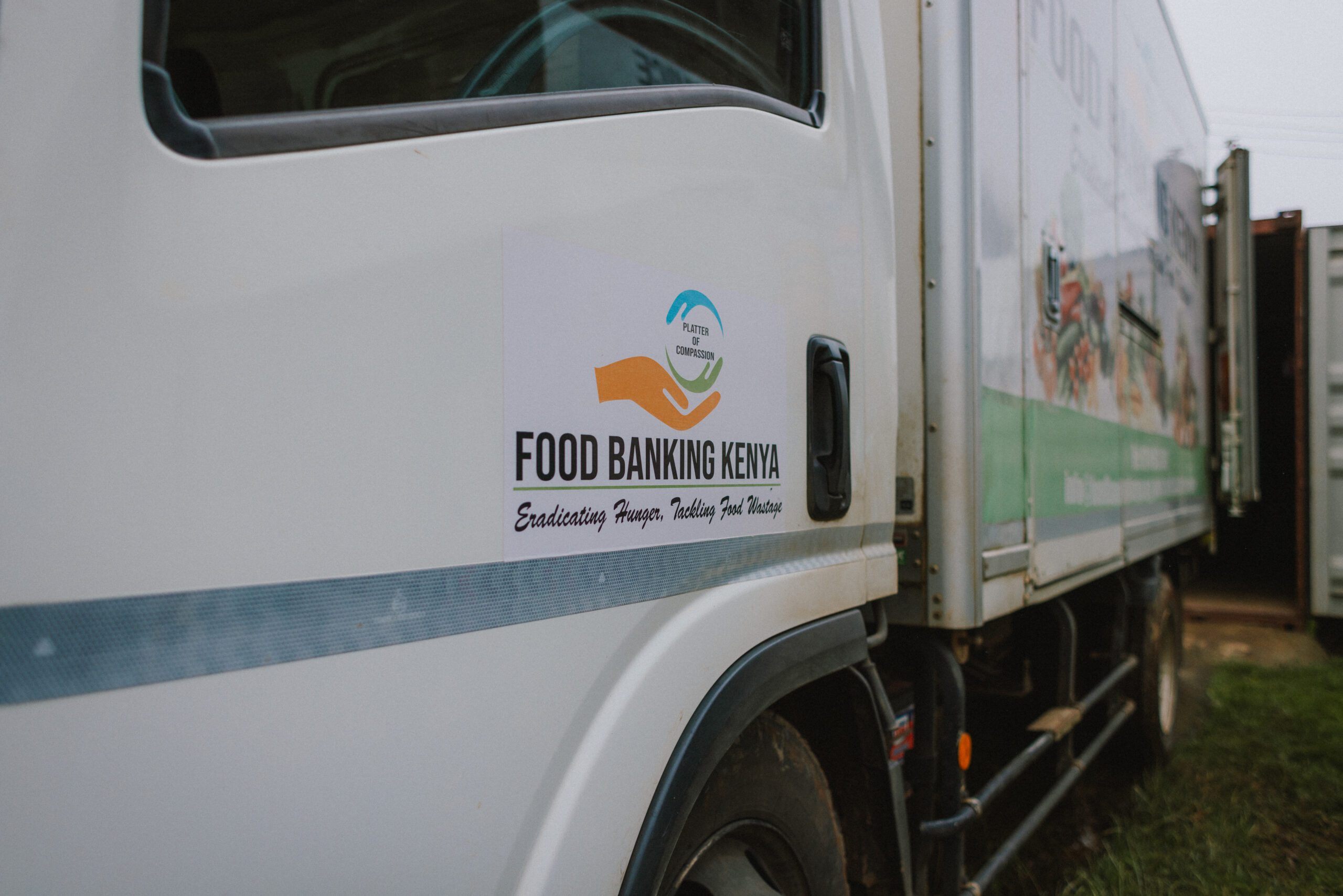
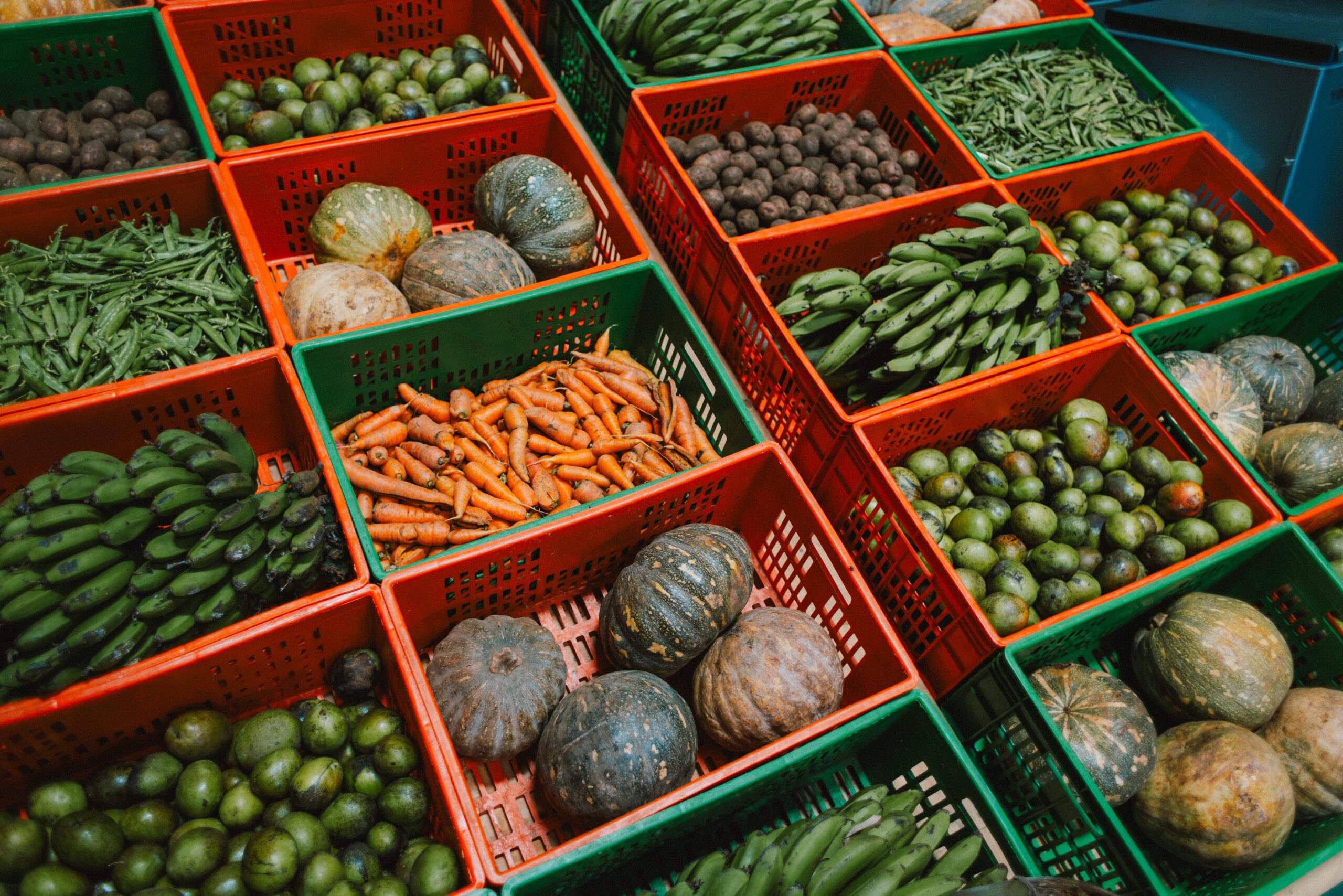
While infrastructure is critical for handling produce, Chege has proven that a personal touch is paramount when it comes to sourcing. Harnessing the power of a network, Chege has trained about 10 other farmers throughout the county to also mobilize farmers in their areas to contribute surplus produce. His efforts have helped expand the number of small-scale farmers contributing to the produce depot from 200 to 600. “I use a motorbike or a bicycle,” Chege said. “That’s what I use to spread the information. I talk to them on the farms and tell them all to come.”
The food bank’s network of small-scale farmers is set to expand even further as it amplifies Chege’s method of grassroots outreach. It has already identified another farmer in a neighboring county whom it hopes will be as impactful as Chege in marshaling local farmers to donate their surplus produce. “We’ve seen that having a farmer actually go around and talk to the others has proven to be very effective,” said John Gathungu, co-founder and executive director of Food Banking Kenya.
Gathungu planted the seed of this still-expanding network back in 2016 when he noticed an imbalance between the hunger he witnessed in Nairobi, where he had moved as a young adult, and the bounty of produce he knew existed in the mountainous region near Chege’s village, where Gathungu’s parents owned property. An overabundance of carrots at his parents’ house one day prompted him to bring a supply of the vegetable back to Nairobi, to share with his city neighbors. Soon, the vegetable transports were becoming more frequent, and the distributions more formal. Gathungu was running a food bank without really knowing it.
Now Food Banking Kenya serves more than 10,000 school children daily through relationships with more than 50 organizations including schools and orphanages. In 2023, it distributed nearly 635,849 kilograms of food throughout 13 counties, serving 66,000 people. Its membership in The Global FoodBanking Network has helped Food Banking Kenya gain technical assistance and knowledge. It was through a visit last year with Leket Israel, a fellow member of The Global FoodBanking Network member, that Gathungu observed the importance of nurturing close relationships with a vast community of farmers. “I realized this was an approach we could use,” he said.
On a recent Friday at the food bank’s warehouse, various organizations arrived to pick up food to take back and distribute to the people they serve. Margaret Nekesa, the founder and director of Smile Community Centre, which houses 80 orphaned and vulnerable children in southeastern Nairobi, had rented a car to transport all the food she would receive to take back to her charity.
It did not seem possible that the towering crates of fresh produce that were wheeled out of the food bank’s cooler would fit into the car. It was a modestly sized car, and the columns of fresh produce, some of it retrieved just the day before from the depot, stretched high above everyone’s heads. But little by little, all the produce was transferred into large, nearly bursting mesh bags that were then loaded into the vehicle.
By the end of the day, the large cooler was empty and all the produce was out in the community. That’s just the way Gathungu likes it, to be ready for the next cycle of agriculture recovery and redistribution that would start again on Monday.
Chris Costanzo is the founder and editor of Food Bank News, a nonprofit publication that advances best practices in hunger relief.

